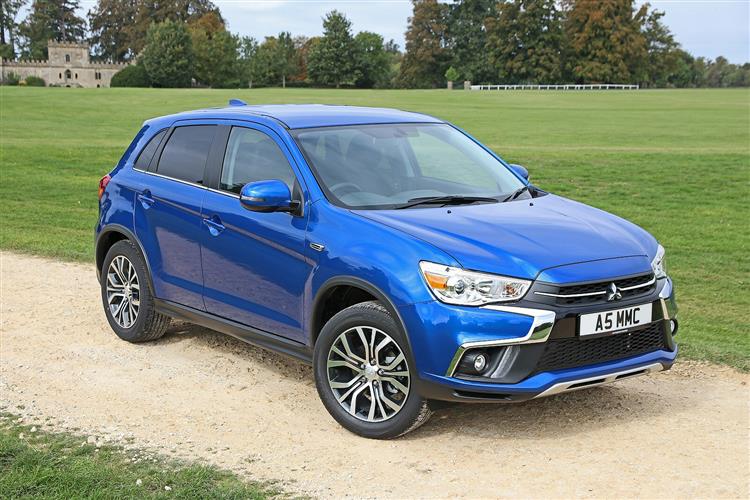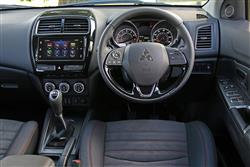This is a sample, showing 30 seconds of each section.
XTREME FASHION (some text hidden) SECTIONED_new_mitsubishiasx_2010
By Jonathan Crouch
Introductionword count: 87
Cars of the Crossover-kind - family hatchbacks with a dose of SUV-style - are deservedly popular but they tend to be sold by brands with very little 4x4 credibility. Not in this case. Mitsubishi's ASX, launched in 2010, was a properly developed and very credible alternative to both small and smaller mid-sized 'Qashqai'-class SUVs. This first generation version received a heavy facelift in 2019 to last it through its last few years of life, but here we evaluate the 2010-2018 pre-facelift models from a used car perspective.
Modelsword count: 13
5dr SUV 1.6 petrol / 1.8 & 2.2 DI-D diesel (3, 4, 5)
Historyword count: 229
Mitsubishi is known as a manufacturer of SUVs, but the kind of SUVs it's best known for aren't really what's in vogue at the moment. Models like the Shogun and the L200 pick-up truck are the real deal. They're tough, uncompromising and capable, like the main protagonists in so many 'hard-hitting' TV cop shows. What's currently setting the automotive world alight though, are SUVs of a smaller, softer bent. Models that may look like they could rough-up an informant but would really rather take the family to the supermarket. The ASX, launched back in 2010, was Mitsubishi's attempt at this more urbane face of SUV motoring, a Crossover model designed around everyday use in the urban rather than the Amazon jungle. 'ASX' stands for 'Active Sporting Crossover', Crossovers being probably the trendiest thing in motoring at the moment - at least if you believe the people who sell them. Nissan's Qashqai started the whole trend for compact hatchbacks with added versatility and SUV attitude back in 2007 and it was quickly joined by a host of rivals. Mitsubishi continually updated this first generation ASX, adding a 2.2-litre diesel engine in 2012, then various plusher trims across the range in the years thereafter. The most substantial change came with a far-reaching facelift and a switch to 2.0-litre petrol power in 2019, but it's the pre-facelift models we look at here.
What You Getword count: 362
Mitsubishi's stylists attempted to give this car the SUV-style attitude that Crossover buyers like so much, while borrowing the 'jet fighter'-style nose from their Evo rally replica. Add in the flared wheel arches, elevated ride height and roof rails you'd expect from this class of car and it's a mix that ought to have produced quite an arresting result but in the metal ended up being one that won't cause many eyebrows to raise when you roll up at Tesco or join the soft roaders in the queue outside the school gates. In the same way that the ASX's diesel engine offers big-hearted virtues with small-time efficiency, so the design team attempted to do the same when it comes to this car's shape and size. So though this model slotted in below Mitsubishi's apparently much larger Outlander SUV, it shares much the same underpinnings, with a long wheelbase that allows for an interior that's a good deal roomier than you might expect. The cabin takes two rear-seated adults comfortably even if they're the tallest teenagers, with space for three uncomplaining ones available on shorter journeys. Though the rear bench doesn't slide, the seat backs do recline for greater comfort on longer journeys and there was an optional panoramic glass roof to flood the cabin with light. Up front, the dash layout isn't hugely adventurous in its design, with a proliferation of dark plastics lightly peppered with metallic detailing, but the bright LCD display between the two main dials is useful, the soft-touch finish of the fascia is nice, the controls are refreshingly simple and you certainly aren't overwhelmed by too many buttons. It's easy to find a comfortable driving position too, thanks to a wheel that adjusts for reach as well as height. Out back, there's 442-litres of luggage space (32-litres more than you get in a 5-seater MK1 Qashqai), with 60:40 split Easy-fold rear seats that can be dropped down to increase that total substantially to 1193-litres, a massive 333-litres more than you get in that MK1 Nissan. Plus there are plenty of storage areas around the cabin, including a tray under the boot floor that can hold an extra 30-litres.
To see the full road test text contact us on 0330 0020 227
Pictures (high res disabled)

.jpg)
|
.jpg)
|
.jpg)
| |||
.jpg)
|

|
Scoring (subset of scores)
Category: Crossover or SUV 4x4s
| Performance | |
| Handling | |
| Comfort | |
| Space | |
| Styling, Build, Value, Equipment, Depreciation, Handling, Insurance and Total scores are available with our full data feed. | |



